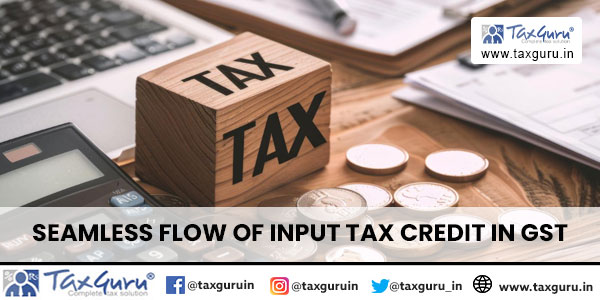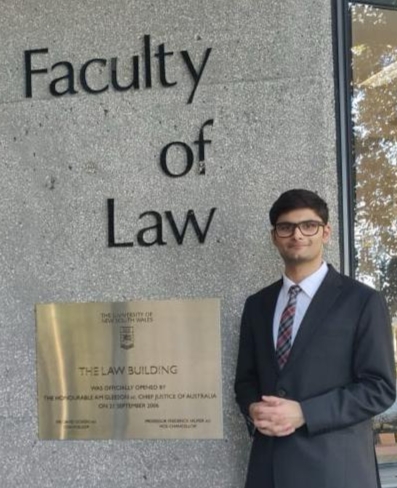Introduction: Introduced in India in 2017, the Goods and Services Tax (GST) promised a simplified tax regime with seamless Input Tax Credit (ITC) flow. However, despite its widespread adoption, achieving this seamless flow remains elusive. This article dives into the intricacies of ITC in GST, highlighting the hurdles faced by businesses in claiming and utilizing credits effectively. From eligibility criteria to regulatory complexities, we dissect the challenges that hinder the smooth operation of the GST credit system.
Indirect tax, GST, presently applicable in 160 countries worldwide, originated in France in 1954 and was introduced in India with effect from 1st July, 2017 by the historic midnight session of the Parliament. Seventeen indirect taxes were subsumed into one basket with the national slogan of ‘One Nation One Tax.’ Primarily, it is a tried and tested system of destination-based consumption tax with no cascading effect resulting in cost reduction. In this system, tax is not a burden on business but on the consumer and businesses are just intermediary entities. Taxes paid by them are fully adjustable through the supply chain and thus, tax does not form part of the cost and is not a factor in business decisions resulting in global competitiveness, uniform compliance, and overall ease of doing business.
First and foremost, seamless flow of Input Tax Credit (ITC) is the soul of this system making it a ‘good and simple tax’, however, after more than six years of its implementation, having nearly 1.4 crore registered taxpayers and progressing monthly collections, this promise of seamless ITC is still subject to many ‘ifs’ and ‘buts’, formulas, interpretation and finally the understanding and mood of the tax officials. Law is still evolving, and continuous changes are making it a roller coaster ride for the taxable person.
The claim of ITC has to pass through the eligibility tests and conditions of Section 16 read with Rule 36 regarding possession of tax invoice, its auto-population in GSTR-2A / 2B, actual receipt of goods / services, non-restriction of ITC, its actual payment to the government and availment by filing return under Section 39 i.e., GSTR-3B. Also, the payment must be made in 180 days from the date of invoice. Then comes blocks, apportionments and reversals of Section 17 read with Rules 42 and 43. This is further subject to restrictions (99%) laid down in Rule 86B for specified suppliers. Over and above, under Rule 86A, the Commissioner or an authorized officer has the power to block the use of suspected ‘fraudulently availed ITC.’

Finally, the use of filtered ITC in Electronic Credit Ledger is regulated by the provisions of Section 49 for payment of output tax only, and for payment of interest, penalty, fees, or any other amount the taxable person must use Electronic Cash Ledger.
This exercise of claiming ITC is further complicated by practical issues of month / year-end invoices, GST debit / credit notes, financial debit / credit notes, reconciliations, GST on advances received for supply of services, varied accounting practices and softwares and general lack of accounting and accountability responsibilities. While the corporate sector is well equipped with battery of accountants, CAs and tax lawyers to handle the ITC issues in everchanging GST ecosystem with continuous flowing stream of notifications, the MSME and unorganized sector, depending generally on part-time / semi-qualified accountants is suffering the most. The menace of bogus firms and fake invoicing detected by 24×7 pro-active surveillance with huge data mining is leading to the situation where rules are consistently being redesigned to nab a small percentage of fraudsters promptly, but they are making the compliance and seamless flow of ITC difficult for a significant percentage of small taxable persons.
Recently GST authorities have issued a large number of demand notices totaling lakhs of crores to businesses due to inconsistencies in ITC claims for Financial Years 2017-18 and 2018-19 based mainly on mismatch of ITC between GSTR-2A / GSTR-2B / GSTR 3B.
It is to be noted that Form GSTR 3B, introduced temporarily due to GSTN glitches, became a valid Return with effect from 09/10/2019 only and till that date, there is no legal requirement to claim ITC on the basis of GSTR 2A. Likewise, GSTR 2B was introduced with effect from 01/01/2022 only. There are several cases of nonpayment of tax by the supplier to the government and here again the ITC is being denied to the purchasing taxable person.
Issue of ITC is the subject matter of maximum number of Show Cause Notices (SCNs) and in spite of a continuing stream of CBIC circulars, clarifications, amendments and judicial pronouncements of Appellant Authorities, AARs, High Courts and the Honorable Supreme Court, the seamless and flawless flow of ITC for the taxable persons leaves much to be desired.





